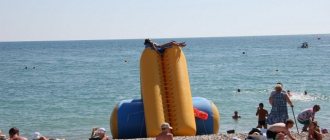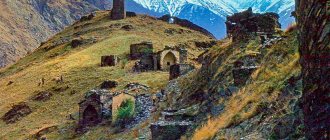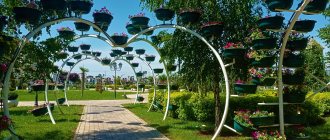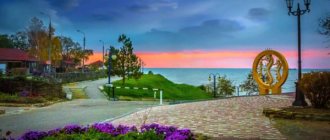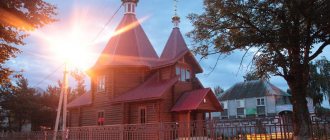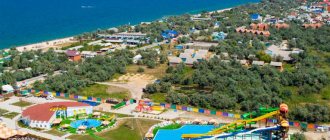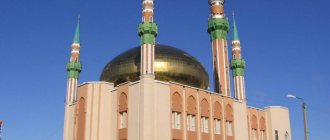Where is the city of Grozny?
Grozny is the capital of Chechnya and the center of the Grozny region.
The city is located in the North Caucasus, has the status of a city of republican significance and forms an urban district. The city is located on the right and left banks of the Sunzha River, and is also surrounded by the Grozny and Urus-Martan regions of Chechnya. It ranks second in area among the cities of the North Caucasus. The total area of Grozny is 324 square kilometers. The approximate population is 297 thousand people. The climate in Grozny is temperate continental. The climate of the area is characterized by mild winters and long, hot summers. The annual precipitation rate is 439 mm. Grozny is located in the same time zone as Moscow, the offset relative to Coordinated Universal Time (UTC) is +3.
Geographic coordinate systems
The world coordinate system WGS 84 is used in the satellite-based global positioning and navigation system GPS.
Coordinates (latitude and longitude) determine the position of a point on the Earth's surface. The coordinates are angular values. The canonical form of representing coordinates is degrees (°), minutes (′) and seconds (″). GPS systems widely use the representation of coordinates in degrees and decimal minutes or in decimal degrees.
Latitude takes values from −90° to 90°. 0° – latitude of the equator; −90° – latitude of the South Pole; 90° – latitude of the North Pole. Positive values correspond to northern latitude (points north of the equator, abbreviated N or N); negative – southern latitude (points south of the equator, abbreviated as S or S).
Longitude is measured from the prime meridian (IERS Reference Meridian in the WGS 84 system) and takes values from −180° to 180°. Positive values correspond to east longitude (abbreviated as E or E); negative – western longitude (abbreviated as W or W).
UTM or Universal Transverse Mercator divides the Earth's surface into 60 meridional zones. The coordinates of a point within each zone are defined as a pair of planar coordinates, measured relative to the intersection of the equator and the central meridian of the zone, and are measured in meters.
Height above sea level shows the height of a point relative to conventional sea level. We use the GTOPO30 digital elevation model.
Source
Grozny Airport
There is an international airport in Grozny, which has the status of a federal facility. The airport terminal building consists of one terminal, the type of airport is civil, the operating hours are 24 hours a day. Distance from the center of Grozny to the airport - 6 km
Popular flight destinations: Moscow, Rostov-on-Don, Bishkek, Istanbul, Sharjah. The airport serves aircraft of major Russian and foreign airlines: Azimut, UTair, Aeroflot, Avia Traffic Company, Air Arabia, Pegasus Airlines. The annual passenger traffic is more than 250 thousand people.
Story
Russian fort
Grozny Fortress
(Grozny, lit.
formidable
) (feminine form of Grozny, since the word fortress (fortress) is feminine in Russian) was founded in 1818 as a Russian military outpost on the Sunzha River with General Yermolov. During the construction of the fort, the Chechens fired at the workers. The Russians solved the problem by placing a cannon at a carefully chosen point outside the walls. When night fell and the Chechens came out of their hiding places to steal the gun, all the other guns opened fire with grapeshot. When the Chechens came to their senses and began to carry away the bodies, the guns opened fire again. When it was all over, they counted 200 dead. So the “formidable” fort received a baptism of fire. It was an important defense center during the Caucasian War. The fortress was visited by Russian poets Alexander Griboedov, Alexander Polezhaev, Mikhail Lermontov, classic of Russian literature Leo Tolstoy, Decembrist and writer Alexander Bestuzhev and other famous figures of Russian culture. After the annexation of the region by the Russian Empire, the military use of the old fortress was obsolete, and on 11 January [O.S. 30 December 1869] 1870 it was given city status and renamed Grozny (as the word gorod (gorod) is masculine). in Russian). Since most of the inhabitants here were Terek Cossacks, the city grew slowly until the development of oil reserves in the early 20th century. The founder of the Nobel Prize, Alfred Nobel, took part in the development of the oil industry of the city of Grozny, as well as members of the Rothschild family. Apart from the Nobels and Rothschilds, British companies have played an important role in the oil industry since 1893. English engineer Alfred Stewart completed the first well in Grozny, drilling the largest oil field in the Caucasus region (outside the Baku region) in 1893. Before 1900, 11 companies drilled 116 wells. This contributed to the rapid development of industry and petrochemical production. In addition to oil production in the city itself, the city became the geographic center of Russia's network of oil fields, and in 1893 it became part of the Transcaucasia-Russia Proper railway. As a result, the population nearly doubled from 15,600 in 1897 to 30,400 in 1913. At the beginning of 1914, the largest oil company Royal Dutch Shell was founded in the city, which made Grozny one of the largest industrial centers in the Caucasus.
Bus stations of Grozny
The central bus station in Grozny is located at st. Mayakovsky, 113, next to the mosque. There is a fountain on the territory of the bus station. The bus station operates 24 hours a day, seven days a week and without long technical breaks. Popular routes of regular buses: Derbent, Rostov-on-Don, Nalchik, Pyatigorsk, Mineralnye Vody, Makhachkala, Krasnodar, Stavropol.
The second bus station in Grozny is located at st. Mikhailova, 1. The Zapadny bus station building is located opposite the large Beshtau shopping complex. From the Zapadny bus station there are routes to Kislovodsk and Stavropol.
Automobile highways
Federal highways pass through Grozny:
- P217 "Caucasus" is a federal highway, the total length of which is 1118 km. It is part of European routes E50 and E119. The route passes through the territory of the following regions of Russia: Stavropol Territory, Krasnodar Territory, Chechnya, Dagestan, Ingushetia, Kabardino-Balkaria, North Ossetia. The end of the route is the state border with Azerbaijan. The road surface is asphalt.
- P215 is a federal highway, the total length of which is 470 km. It is part of the European route E119 and the Asian network AH8. The road originates in Astrakhan and passes through Artezian, Kochubey, Red Barricades, Tarumovka. The final point of the route is Makhachkala. The road surface of the P-215 highway is soil and asphalt.
- E50 is a European route that passes through Russia, Ukraine, France, the Czech Republic, Germany, and Slovakia. The total length of the highway is 6,000 km. The beginning of the road is Brest, the end is Makhachkala.
Names
Translated from Russian, "Grozny" means "formidable", "formidable" or "formidable", the same word as in "Ivan the Terrible" (Ivan the Terrible). Although the official name in Chechen is the same, unofficially the city is known as "Sojlzha-Gӏala" ("Selƶa-ala"), which literally means "city (gӏala) on the Sunzha River (Sojlzha)".
In 1996, during the First Chechen War, Chechen separatists renamed the city Dzhokhar-Gala
(Chechen: Dzhovkhar-GӀala, Dƶovxar-ala), or abbreviated
Dzhokhar
/
Dzhokhar
, in honor of Dzhokhar Dudayev, the first president of the Chechen Republic of Ichkeria. . In December 2005, the Chechen parliament voted to rename the city "Akhmadkala" (in honor of Akhmad Kadyrov), a proposal that was rejected by his son Ramzan Kadyrov, the prime minister and later president of the republic.
What is Grozny famous for?
- One of the calling cards of Grozny is Akhmat Kadyrov Square, which is located at the intersection of Putin and Isaev avenues. The square is named after the first president of the republic. Previously, the square bore the names of Lenin and Freedom.
- Grozny is home to one of the largest mosques in Europe - the “Heart of Chechnya”. The Blue Mosque from Istanbul was taken as the basis for the project. Construction was completed in 2008. Marble was used as finishing. The area of the park around the mosque is 14 hectares.
- In the central part of the city there is a complex of high-rise buildings "Grozny-City", which was built on the banks of the Sudzha. In total, the complex includes seven buildings: office buildings, residential buildings and a hotel. The tallest building consists of 40 floors, the lowest - 18.
- In 1931, the Chechen Drama Theater opened in Grozny. On the basis of this theater, educational work is carried out, as well as various charity events.
- The city has the National Museum of the Chechen Republic, built in 1924. In the halls of the museum there are various exhibits that are dedicated to wars, archaeological finds and outstanding personalities of the Chechen Republic.
- In 1904, the National Library of the Chechen Republic opened in Grozny. The building was destroyed in 1994. Currently, the façade of the library looks like an open book. The library has a video library, reading rooms, a gallery, and a winter garden.
Grozny
The capital of the Chechen Republic, 2007 km south-southeast of Moscow. Located in the North Caucasus, on the Chechen (Grozny) foothill plain, in the valley of the Sunzha River (the right tributary of the Terek) and on the adjacent slopes of the Sunzha ridge. The climate is continental. Winter is mild, with unstable weather and frequent thaws, the average temperature in January is -4? C. Summer is hot, the average temperature in July is 22-24? C. Precipitation is 400-600 mm per year, mainly from May to July.
Grozny is a railway station on the Rostov-on-Don - Baku line. Road junction. Airport. In 1992, the population of the city was 387.5 thousand people (in 1897 - 15.6 thousand, in 1926 - 68.7 thousand, in 1939 - 173 thousand, in 1959 - 250 thousand, in 1970 - 341 thousand, in 1979 - 375 thousand).
Founded in 1818 as the Grozny fortress by order of General A.P. Ermolov. As the most important link in the Sunzha fortified line, the fortress blocked the mountaineers’ access from the mountains to the plain through the Khankala Gorge.
A.S. Griboedov, who was arrested here in 1826 in connection with the Decembrist case, visited the Grozny fortress. Decembrists I.A. Bestuzhev, I.I. Pushchin and others, as well as M.Yu. Lermontov (in 1840) and L.N. Tolstoy (in 1851-1854) served in the fortress in the Caucasus. . By 1870, the fortress had lost its strategic importance, was abolished, and transformed into the district city of Grozny, Terek region. At the end of the 19th - beginning of the 20th centuries. The rapid growth of the city was facilitated by the construction of the Beslan-Grozny railway (in 1893 further to Baku) and the beginning of industrial development of the fields of the Grozny oil region. By 1917, 386 oil wells were operating in the area. Oil was exported by rail, pumped to the coast of the Caspian Sea (now Makhachkala) via the first oil pipeline in Russia, Grozny - Petrovsk-Port (built in 1914), and also supplied to local oil refineries. An iron foundry and mechanical workshops operated in the city.
During the Civil War, Grozny and its surroundings were the scene of fierce battles. Since 1922, Grozny has been the center of the Chechen Autonomous Region, since 1934 - the Chechen-Ingush Autonomous Region, transformed into the Autonomous Soviet Socialist Republic in 1936. In the 1920-30s. The oil production industry of the Grozny oil region was restored and further developed. At the end of the 1920s. The Grozny-Tuapse oil pipeline was built. New enterprises in the oil refining, engineering, chemical, light and food industries, as well as universities, cultural institutions, etc., have emerged in Grozny.
During the Great Patriotic War of 1941-1945. Significant damage to the city was caused by the bombing of fascist German aircraft in the summer of 1942. During the years of Stalinist repressions, after the eviction of the Chechen and Ingush peoples to Central Asia, in 1944-1957. Grozny was the center of the Grozny region. Since 1957 it has been the capital of the Chechen-Ingush Autonomous Soviet Socialist Republic.
At the end of the 1980s. Grozny was the center of the oil production, oil refining, petrochemical and chemical industries of the North Caucasus, an industrial and cultural center. Oil refining products obtained at the Grozny Oil Refinery, as well as associated and natural gas, served as raw materials for the enterprises of the Groznefteorgsintez Production Association, which produced various types of finished chemical products and semi-finished products (acetylene, phenol, polyethylene, synthetic alcohols, tanning agents, etc.). In Grozny there were machine-building enterprises - the oil engineering plant "Krasny Molot" and , which produced various types of machines, equipment, units, assemblies and apparatus for the oil and petrochemical industries - as well as PA "Office equipment", factories - transport engineering, "Electropribor", radio engineering, etc., food processing enterprises (canning, winemaking, dairy, meat, etc.), light goods (clothing, shoe factories), woodworking industries, enterprises producing building materials. Many enterprises worked for the military-industrial complex. Grozny was connected to the oil fields by a network of oil and gas pipelines. Main gas pipelines connected Grozny with Stavropol and the village of Voznesenskaya (Ingushetia). There were several research and design institutes in the city, including the Grozny Oil Research Institute, the State Institute for the Design of Oil Industry Enterprises, the Grozny State Institute for the Design of Oil Refining and Petrochemical Industry Enterprises, and the Chechen-Ingush Institute of History, Sociology, and Philology.
Before the armed conflict of 1994-1996. in the city there were four theaters - the National Drama Theatre, the Russian Drama Theatre, the Ingush National Drama Theater, the Puppet Theater - and two museums - the Checheno-Ingush State United Museum and the Museum of Fine Arts.
In 1871, the first plan of the city was drawn up. After the construction of the railway and with the development of the oil industry, Grozny grew rapidly, but remained an undeveloped city with a predominance of one-story mud huts and adobe houses. Three districts of modern Grozny - Zavodskoy, Leninsky and Oktyabrsky - included chaotically located residential areas (microdistricts, villages, "sites") of both modern multi-storey panel buildings and one-story private houses, passing into the settlements of the Grozny rural region (Alkhan-Kala , Alkhan-Yurt, Prigorodny, Chechen-Aul). The Staropromyslovsky district stretches for many kilometers to the northwest along the highway of the same name. Until 1995, the central part of Grozny was formed by wide streets and avenues, with buildings dating back to the 1940s and 50s predominating. The city had many green spaces, flower beds and fountains. The main square with the building of the former republican committee of the CPSU (completely destroyed in 1996) and the main highways are inscribed in a rectangular grid of streets and connected by ring and semi-ring roads. According to the general plan of 1950, numerous industrial buildings, multi-storey residential buildings and public buildings were built, including: the Giprogrozneft Institute (1950, architect L.I. Dedkov), the Palace of Pioneers and Schoolchildren (reconstruction, 1953 ., architect L.I. Khait), Central Department Store (1956, architect R.M. Vlasov; severely damaged during military operations of 1994-1996 and 1998-2000), Republican Library (1965, engineer V.M. Izmailov), airport (1965, architect R.X. Barseghyan, D.A. Kadiev), building of the Republican Council of Ministers (1966, architect I.I. Zagrebailov).
An overpass (about 300 m long; engineer K.P. Nazarenko) connected two industrial areas with the center. Near the center there are blocks of one- and two-story houses surrounded by orchards. A park with a complex of cultural (1949, architect B.N. Fedotov) and sports (1960, architect Dedkov) structures was created in the Zavodsky district. On the outskirts of the city there were residential areas of multi-storey buildings built in the 1960s-1980s.
In Grozny, monuments were erected to M.Yu. Lermontov, A.I. Polezhaev, A.P. Chekhov, heroes of the Civil War (heavily damaged in 2000), the memorial “Fire of Eternal Glory” - to Soviet soldiers who died during the Great Patriotic War wars of 1941-1945 (in 1997 it was converted into a memorial to the fighters for the independence of Chechnya).
In the southwestern part of Grozny, in Chernorechye, in the valley of the Goyta River, there is an artificial reservoir (Grozny Sea), on the banks of which until the end of the 80s. a recreation area with a beach and other facilities was located (created in 1965).
Since 1990, Grozny has been the capital of the Chechen-Ingush Republic, since 1991 - the Chechen Republic, since 1994 - the Chechen Republic of Ichkeria (currently the official name of Chechnya is the Chechen Republic).
The building of the Republican Party Committee in 1991 was turned into the residence of the President of the Chechen Republic Dzhokhar Dudayev, became a symbol of the struggle of the Chechen people for independence and was heavily damaged as a result of bombing in January 1995, in 1996 the remains of the presidential palace were blown up.
After the death of Dzhokhar Dudayev in 1996, Grozny was renamed by the separatists to the city of Dzhokhar-Gala.
During the armed conflict of 1994-1996. and the “counter-terrorist” operation of 1998-2000. A significant part of the city was destroyed. During the assault on Grozny by federal troops in December 1994 - March 1995, the central regions were destroyed (about 20-25 thousand residents died during the fighting). In August 1996, Grozny was captured by Chechen troops; during the fighting, the previously partially restored central and southern parts of the city were significantly damaged. As a result of the bombing and assault of the city in October 1999 - February 2000, almost all residential areas were severely or completely destroyed. Over 40 thousand people survived the last siege and assault of Grozny, and more than 5 thousand died.
During the hostilities, all industrial enterprises were destroyed and looted; The city's infrastructure, according to some estimates, cannot be restored. Most of the healthcare facilities were also destroyed.
By the summer of 2000, the population of Grozny was over 80 thousand people. Three higher educational institutions continue to operate in Grozny: Chechen (formerly Chechen-Ingush) State University, Oil (since 1929) and Pedagogical Institutes. By the end of 2000, about 10 thousand students were studying there. Among the healthcare facilities in Grozny, the 9th city hospital operates - practically the only multidisciplinary clinic in the republic. In those areas where the population has returned, secondary schools operate.
The railway connection is currently carried out through the Chervlenaya-Uzlovaya station (line to Mozdok and Makhachkala), the railway lines to Nazran and Vladikavkaz have not been restored. Severny Airport is used as a military base (as is the Khankala military airport - the main base and headquarters of the Joint Group of Forces in the Chechen Republic).
Literature:
- Kazakov A.I. Pages of the history of the city of Grozny. - Grozny. 1989.
- Ponomareva I. Z., Sevostyanov M. P. Worthy of eternal memory. (Monuments and memorable places of Grozny). — Grozny, 1987.
- City Grozniy. — Grozny, 1984.
- Shabanyants N. Sh. The city of Grozny. — Grozny, 1972.
- Simarzin V. S. Heroic Terrible. — Grozny, 1968.
- Ponomareva I. Z., Shcherbakov N. G. What do the street names say? — Grozny, 1966.
- Cities of Russia: encyclopedia / Ch. ed. G.M.Lappo. - M., 1994.

